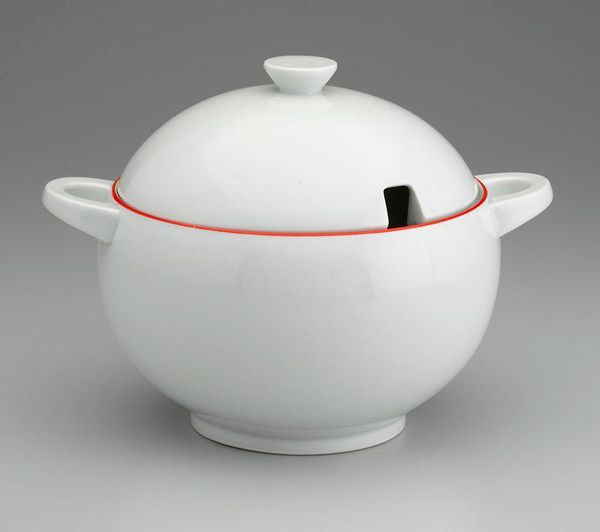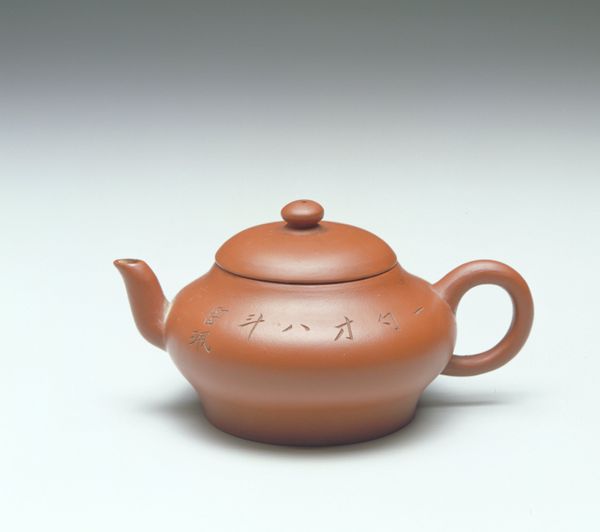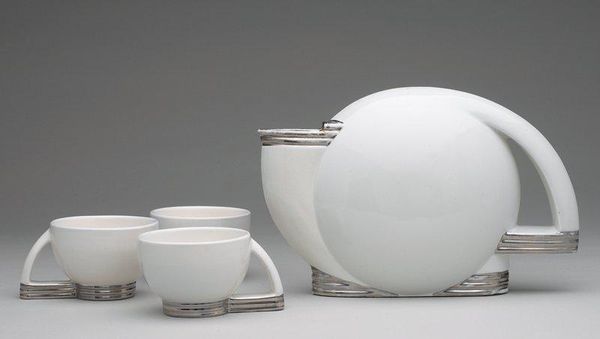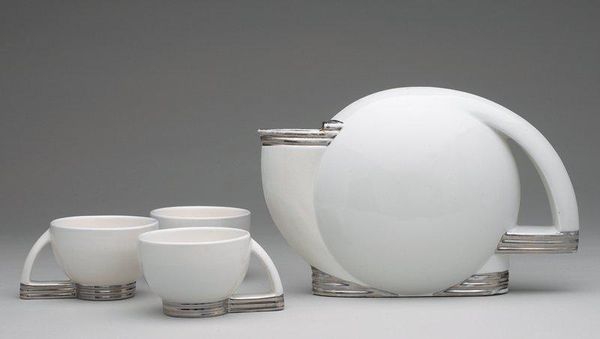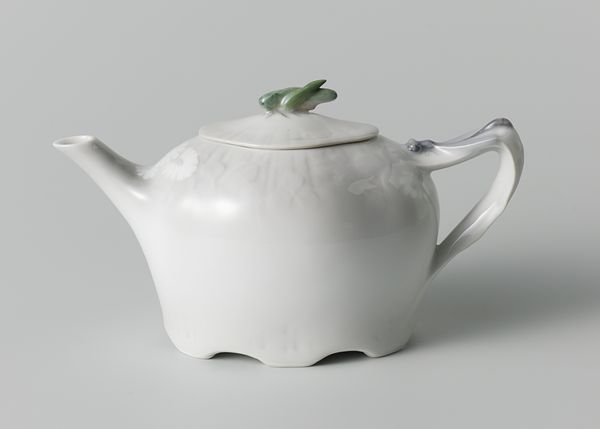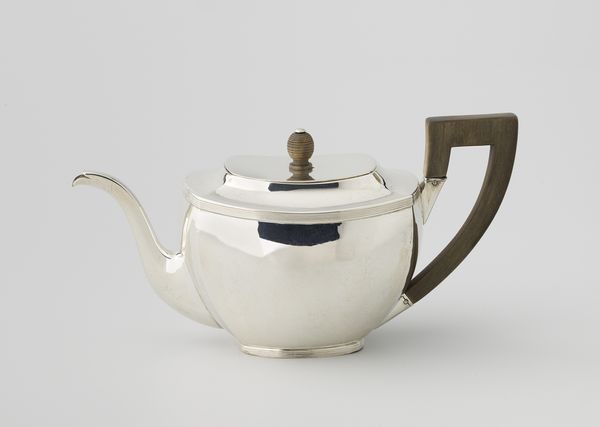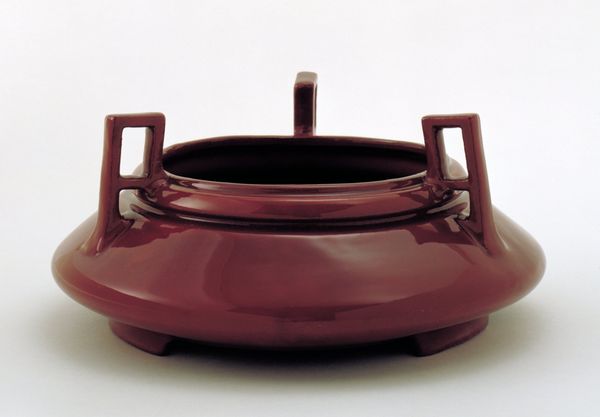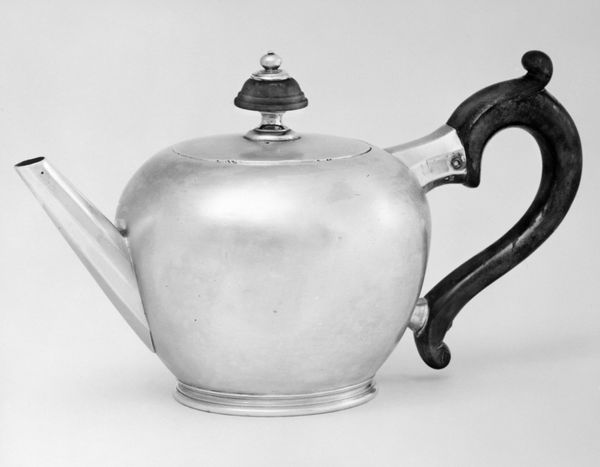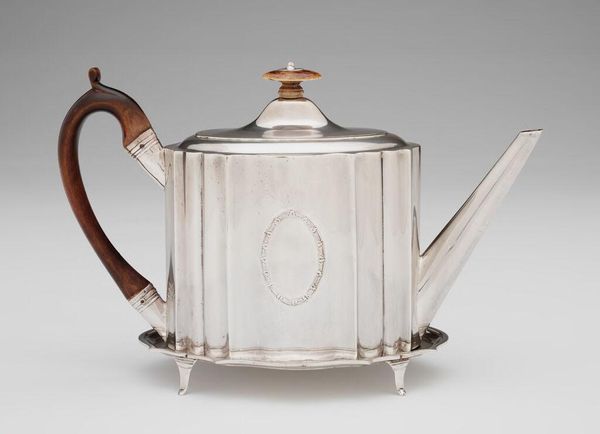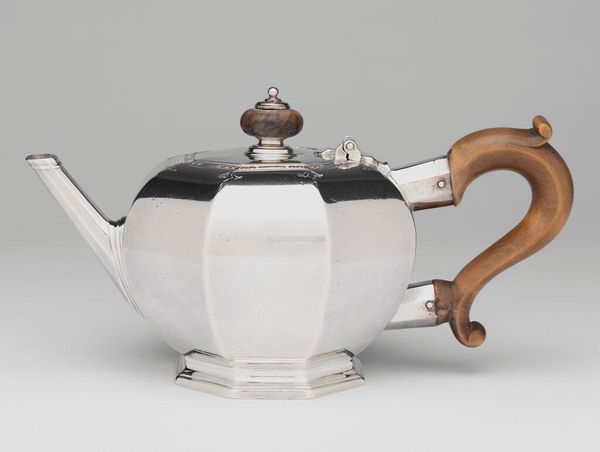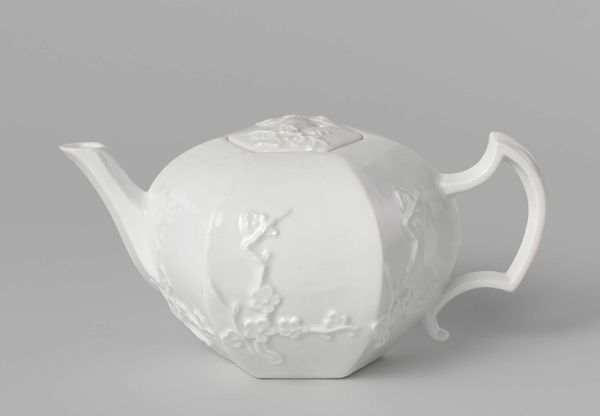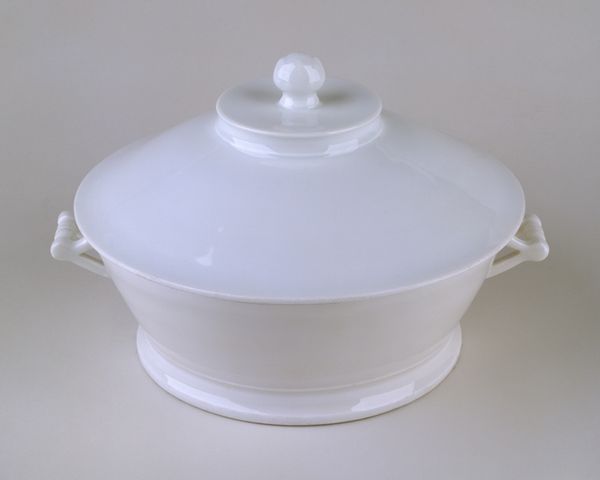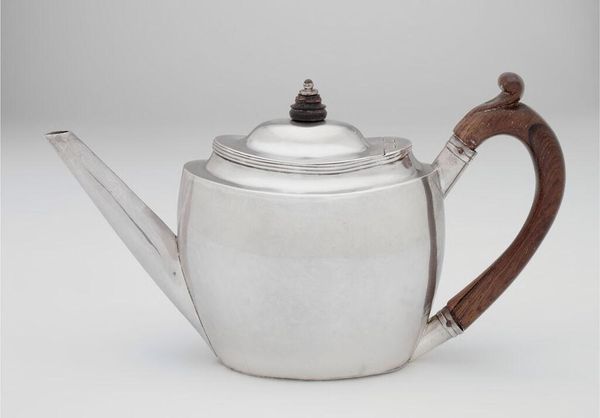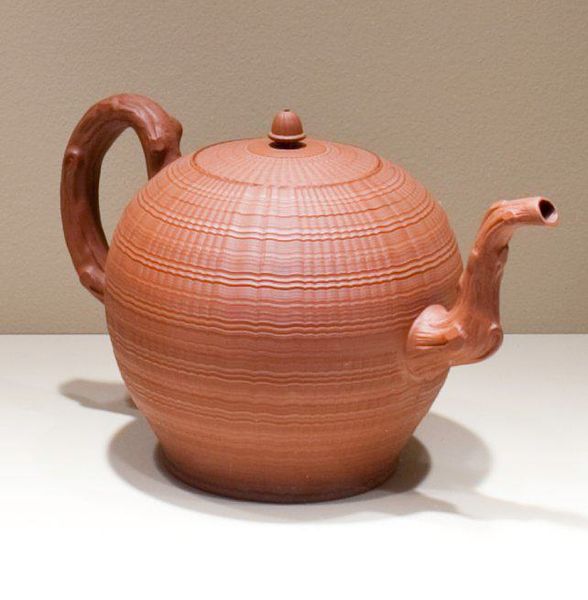
ceramic
#
ceramic
#
stoneware
#
ceramic
Dimensions: 5 x 11 x 7 in. (12.7 x 27.94 x 17.78 cm)
Copyright: No Known Copyright
Editor: This is a teapot made in 1930 by Marguerite Wildenhain. It’s stoneware, a really pure, clean white. It almost looks industrial, but also very hand-crafted, if that makes sense? How would you interpret it? Curator: Its deceptive simplicity conceals a complex history of production. Consider the social context: Wildenhain trained at the Bauhaus. Think about what the Bauhaus represented – a fusion of art, craft, and technology aimed at mass production. Does this teapot reflect those ideals, and how does the artist both embrace and perhaps resist the movement? Editor: I see that. It's machine-made in its perfection, yet it’s ceramic. I mean, someone shaped this on a wheel. Curator: Precisely! Consider the labor involved, the hand skills needed to achieve such precision with such earthy materials. Think about how that contrasts with factory-made objects. Also, what does this clean white stoneware say about consumer culture at the time? Was this luxury or everyday use, given the cost of firing such porcelain? Editor: So it’s making a statement about industry versus craft, even back then. And maybe even wealth, based on material? I hadn't considered it from a social point of view, more from a formalist perspective. Curator: Yes. Examining objects like this teapot through a materialist lens allows us to unpack larger issues surrounding production, labor, and consumption in society. Editor: I will definitely see more to it now. It’s so much more than just a pretty teapot! Curator: It reveals what society valued at that moment.
Comments
minneapolisinstituteofart almost 2 years ago
⋮
Marguerite Wildenhain trained in ceramics at the Bauhaus in Weimar, a center for modernist design education founded by architect Walter Gropius. The Bauhaus championed a rational approach to design, an aesthetic clearly visible in a handful of industrial prototypes - including this teapot - created for the Royal Porcelain Factory in Berlin. The teapot's solid white glaze and clean surface resulted in a design both elegant and modern. Form and function are superbly resolved in three essential areas: an angled spout pours easily without dripping; the countersunk lid does not fall out when tilted; and the large handle facilitates easy pouring. Simplicity of form and timeless design well-adapted to industrial manufacture are the hallmarks of this teapot, one of the finest designs to emanate from the Bauhaus. In 1940, under increased pressure from the Nazis, Wildenhain fled Germany and relocated to the Guerneville, California communal retreat, Pond Farm. Her Pond Farm works employed the same principles she developed in Europe and were sold in department stores such as Gump's in San Francisco.
Join the conversation
Join millions of artists and users on Artera today and experience the ultimate creative platform.
